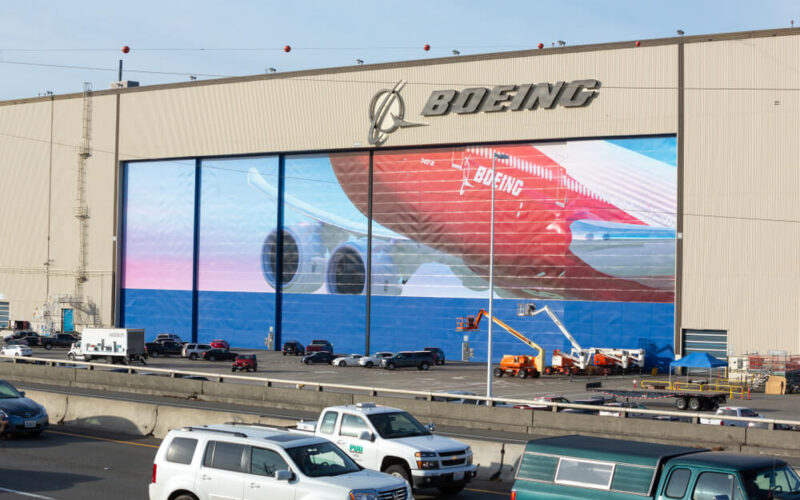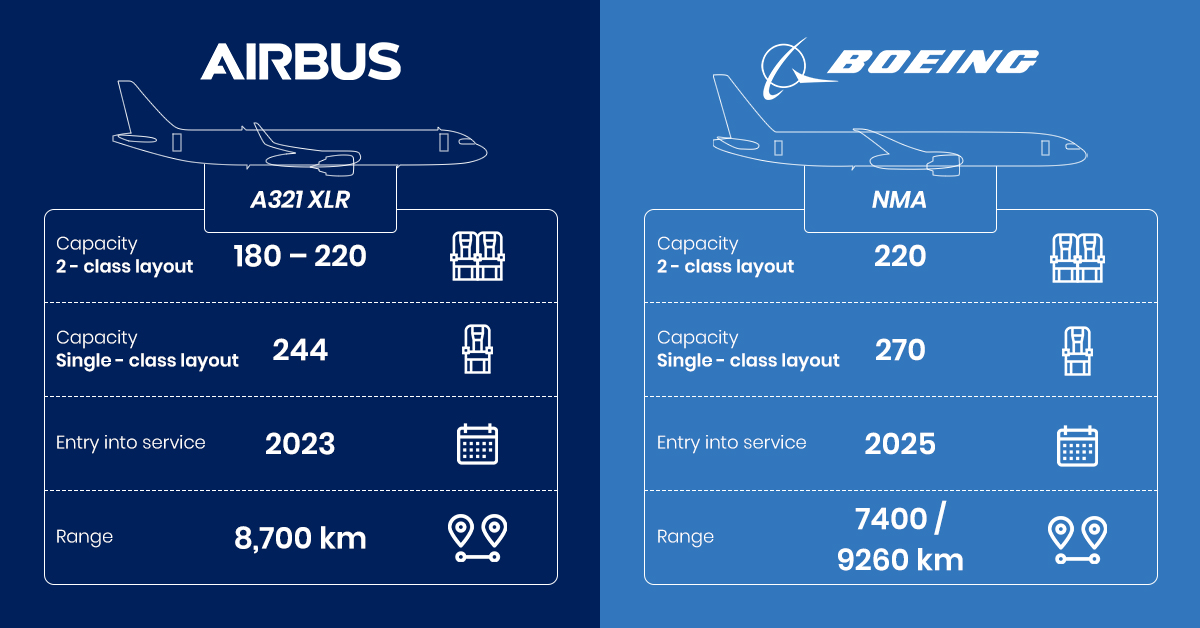With the change of leadership at Boeing, a new tone has set in. With a conservative approach to the eventual 737 MAX ungrounding and a defense of the culture within the company, David Calhoun’s first week as the Chief Executive of the company sounded promising for the company to get back on track. While only time will tell what kind of direction Boeing will take, one thing was clear from the new CEO’s first teleconference with the press and a webcast with the manufacturer’s workforce ‒ the Boeing New Midsize Airplane (NMA) as we know it, is dead.
“We might have to start with the flight control philosophy before we actually get to the airplane,” Calhoun said. Pointing out Boeing’s pilot-first approach to the flight controls of its aircraft, he added that the company would need to “get our heads around exactly what we want,” as it develops a new, clean-sheet design for its approach to the middle market. “We are going to start with a clean sheet of paper, again,” Calhoun stated.
On the other side of the ocean, champagne corks are flying around as Airbus celebrates its success with the A321XLR. Airbus extended the range of the aircraft, based on its A321 design, with a new Rear Centre Tank (RCT), a modified landing gear which brought up the Maximum Take-Off Weight (MTOW) to 101 tones and an optimized trailing-edge flap to keep the same take-off performance as the A321neo.
With a range of 4,700 nautical miles (8,700 kilometers) and the ability to carry up to 244 passengers in a single-class layout, the A321XLR is seemingly perfectly catered towards the future of the aviation industry: with the hub-and-spoke system slowly fading away, airlines will be able to stimulate point-to-point traffic on long-haul distances by offering routes that were previously fairly inconvenient, as travelers have to transfer through hubs.
Much like the Boeing 757 does right now or the Airbus A321XLR plans to do when it enters service in 2023, a direct competitor to the NMA.
Current role of the 757 and A321LR
Despite Boeing introducing the 757 in 1983 with Eastern Air Lines, the product is still widely popular with airlines. Out of 1,049 total built aircraft, commercial airlines still operate more than a third of the total produced aircraft, not including the 300-strong fleet of freighters.
For instance, one Delta Air Lines Boeing 757-200 that was badly bent during a rough landing in Ponta Delgada Airport, Portugal (PDL) in August 2019 was repaired and continues flying to this day, despite the fact that it is already 23 years old, Flightradar24.com data indicates.
Hard landing this morning in Ponta Delgada (PDL), Azores – Boeing 757 @Delta. https://t.co/ahc3WrstqI @JacdecNew @AviationSafety pic.twitter.com/m8rfbXCd4Q
— Aeronews (@AeronewsGlobal) August 18, 2019
During the summer, Delta Air Lines plans to increase its transatlantic flights from Boston Logan International Airport (BOS) and the majority of the increased presence will be associated with the 757, indicated the airport’s summer schedule.
Furthermore, jetBlue, Boston’s number one airline by market share, announced its plans to enter the Transatlantic market in 2021. It’s choice of aircraft? The Airbus A321LR.
Another carrier, namely Scandinavian Airlines System (SAS) also indicated that it plans to convert its summer-only Copenhagen, Denmark (CPH) and Logan International (BOS) to a year-round service. While during the summer it will fly the Airbus A330 on the route, during the lower demand months the A321LR will connect the Danish and the Massachusetts capital cities.
But the 757 is an aging product, one that needs to be replaced: Boeing ceased production of the Flying Pencil in 2004, during a fairly difficult and fragile time at the company, as the whole United States aviation sector was just starting to recover from the September 11 attacks.
Arkia Airlines, a relatively small-scale carrier based in Israel, found the perfect replacement for the 757: the A321LR. Former Chief Executive Officer of the company Nir Dagan, who resigned just three days ago on January 21, 2020, said that Airbus’ equivalent to the 757 is “one of a kind,” as Arkia “found a [single-aisle] aircraft that is more efficient than the 757-300,” reported FlightGlobal in November 2018.
A much larger scale operator, United Airlines, opted for 50 Airbus A321XLR to replace its Flying Pencils. Andrew Nocella, Executive Vice President and Chief Commercial Officer of the Chicago-based airline, noted that the A321XLR is “an ideal one-for-one replacement for the older, less-efficient aircraft currently operating,” with the range capabilities of the aircraft allowing United to “further develop our route network and provide customers with more options to travel the globe,” added Nocella.
Since Airbus launched the A321XLR during the Paris Air Show 2019 in June 2019, the manufacturer logged over 450 orders for the A321 derivative, states the manufacturer’s press release dated December 20, 2019. In just six months, Airbus’ backlog for the XLR almost reached half the amount of total 757s produced.
On one hand, it means that the Boeing 757 was a product clearly ahead of its time. On the other hand, it also indicates that Boeing needs to do something in order not to fall back on a market where its competitors are (Usain) Bolting forward, possibly risking to lose out on a market that is potentially between 4,000 and 5,000 aircraft, at least according to Rolls-Royce’s senior marketing executive, Richard Goodhead who estimated the demand in January 2019.
Varying demand for Middle Market Aircraft (MMA)
There are different estimations of the possible demand for the NMA. For example, Airbus provides a much more conservative estimate of around 2,000 and 2,500 new MMA delivered to airlines in the next two decades, Bob Lange, Airbus’ Senior Vice President and Head of Market and Product Strategy told FlightGlobal in 2019.
But Boeing itself was optimistic, at least that was the message from the ousted CEO, Muilenburg in September 2018 during a Morgan Stanley conference:
“There’s an opportunity there that provide a value proposition for our customers in between our current narrow-body and wide-body fleets. We do think the market is there. Our assessment is showing us it’s about 4,000 to 5,000 aircraft,” stated Muilenburg.
And as the clock ticks, the entry of the A321XLR into service inches only closer, further denting the potential demand for Boeing’s NMA product. The two products are eerily similar, with the NMA just having the edge in capacity and range.
However, what the A321XLR can potentially offer is the ease of transition for flight crews, saving a big chunk of money for airlines that already operate the A320 family aircraft. Boeing’s new clean-sheet design would require the manufacturer to provide training for flight crews, further increasing development costs.
“The A321neo shares a common type rating with other members of the Airbus A320 Family, which allows A320 Family pilots to fly the aircraft without additional training,” states the manufacturer’s page introducing the newly-engined A321. Whether the same could be said about the A321XLR remains to be seen. AeroTime approached Airbus for comment.
Interested parties and shifting priorities
Over the years, several airlines publicly indicated that they would be very interested in the NMA. During the International Society of Transport Aircraft Trading (ISTAT) conference in 2017, executives of Alaska Airlines, Delta Air Lines and United Airlines all praised the idea of Boeing’s new airliner.
In March 2019, Delta Air Lines CEO Ed Bastian reiterated the support for the NMA, stating that airline was “very interested” in Boeing’s potential aircraft. Bastian once again mentioned Delta’s interest in Boeing’s program during the airline’s investor’s day in December 2019.
Qantas’ CEO Alan Joyce also expressed interest in the “paper plane,” as the Australian domestic market is getting more and more congested. The only solution to the problem is to deploy larger aircraft, according to Joyce, reported The Sydney Morning Herald in June 2018.
But, as mentioned above, one party’s interest is diminishing. United Airlines signed up for 50 A321XLR’s, indicating that Airbus aircraft is set to replace its aging 757 fleet. In 2016, United’s former VP in Fleet Management Ron Baur noted that the airline was looking to replace the Flying Pencils with a very similar aircraft, describing it as a “757 on steroids.”
The general consensus in the industry is that Boeing needs to act to Airbus’ increasing market share in the MMA segment. As more airlines opt for the A321XLR, the opportunity to recoup the development costs related to the NMA starts to diminish, further complicating the situation for the manufacturer.
Riddled with costs from the 737 MAX crisis, however, Boeing has little cash to spare. In addition, its Brazilian joint venture with Embraer is not going to come cheap – $4.75 billion, if the European Commission finally approves it. The D-Day for the commission’s decision is set for April 6, 2020.
Yet the NMA lives on, as Calhoun indicated that the manufacturer is still interested in developing the aircraft to fill the gap between the Boeing 787-8 and the 737 MAX 10. Whether it will be born at the wrong time, much like its predecessor, the 757, remains to be seen – with Boeing’s actions in the short-term future providing some sort of indication towards the answer to the question.


